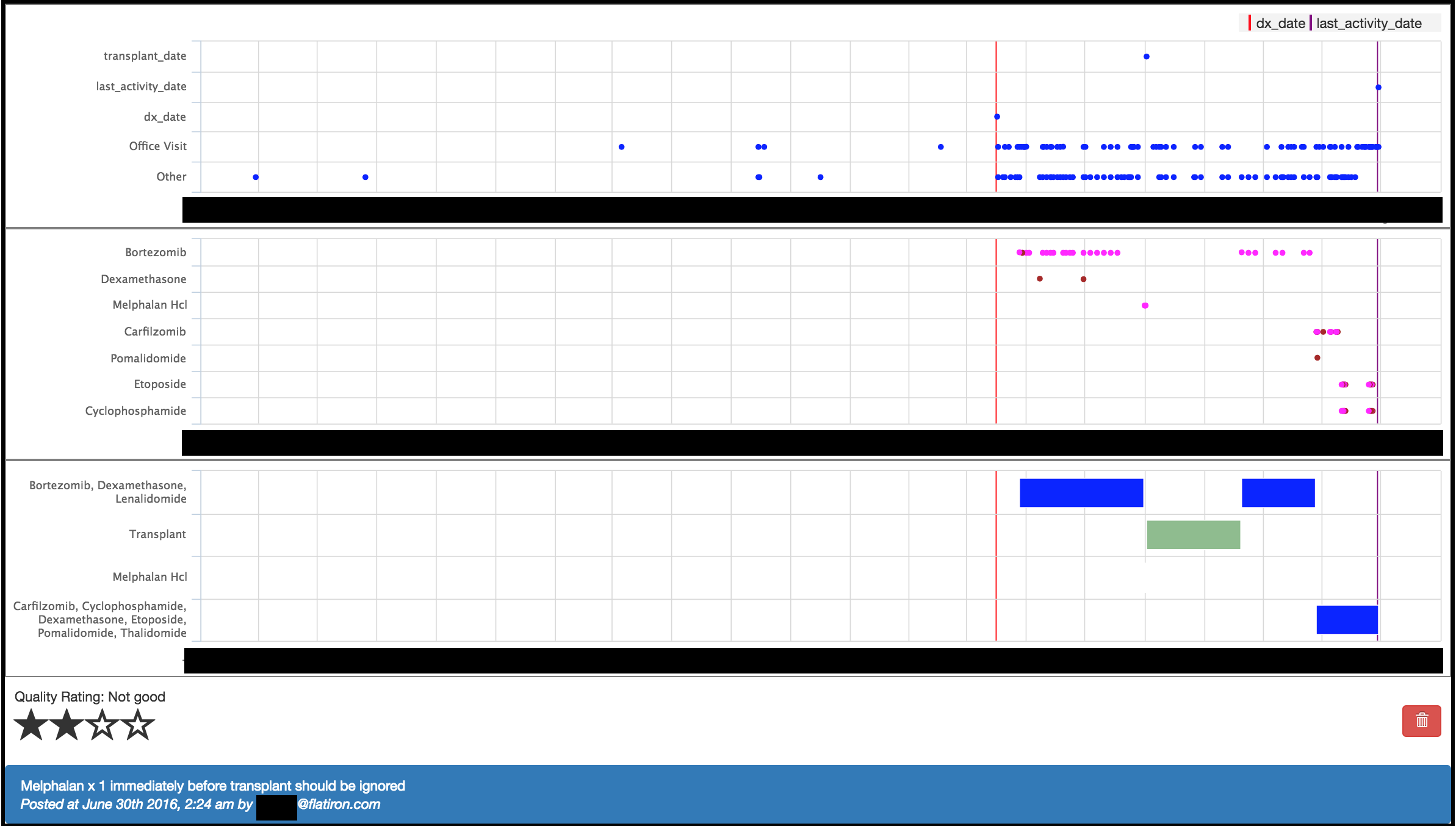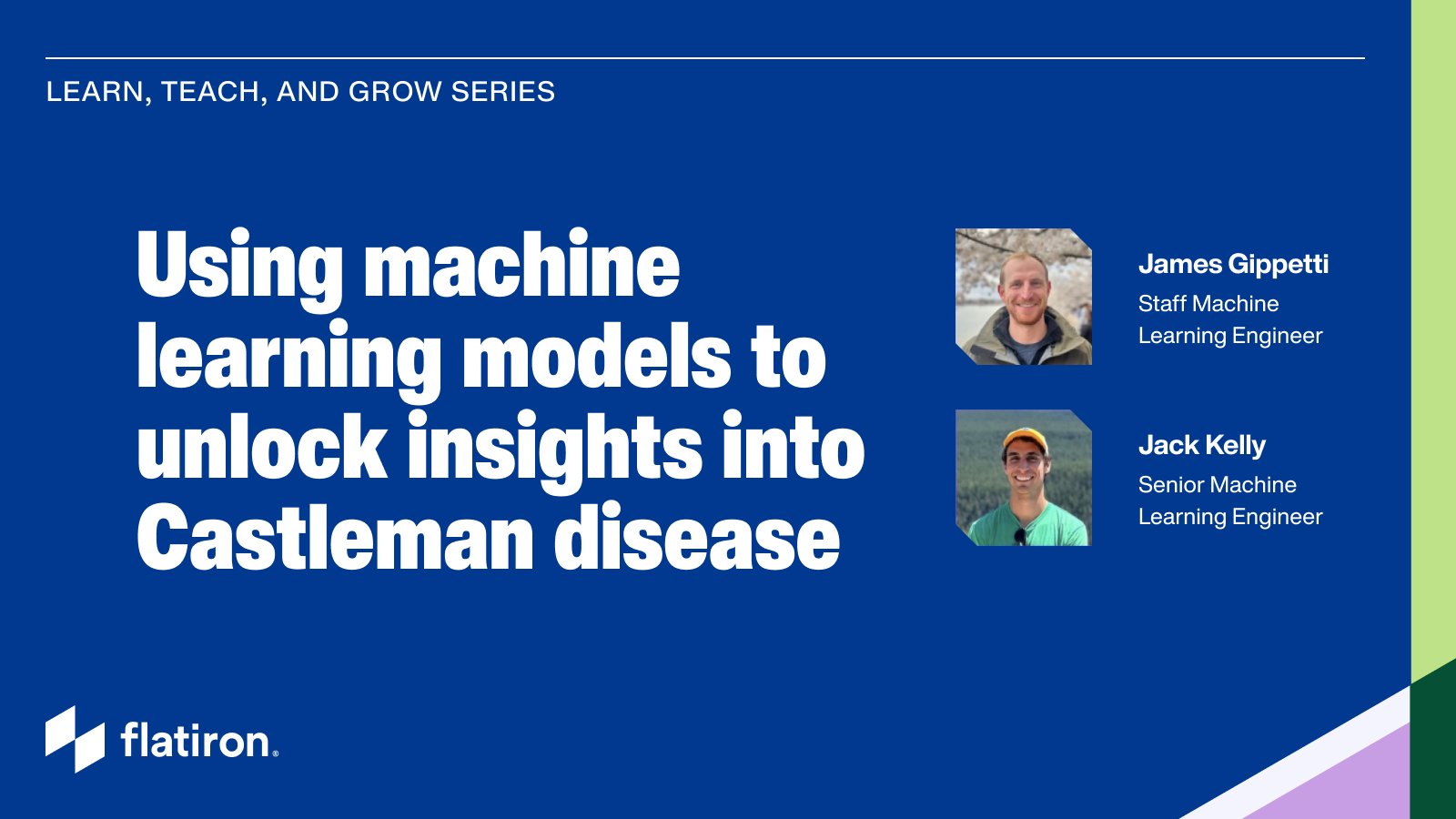One of the main advantages of being an engineer at Flatiron Health is the opportunity to collaborate with talented individuals from a variety of non-technical backgrounds. For instance, the oncologists we work with provide engineers with important context for our day-to-day work and make our analyses insightful and actionable. Oncologists at Flatiron are engaged with their colleagues in traditional ways: attending standups, reviewing tickets and Google Docs to answer questions, and participating in calls with our clinics and research partners. Yet they hold a unique position within Flatiron as former or current users of our products; engineers are able to leverage the clinical team for early feedback on product updates and enhancements. I primarily interact with our oncologists to analyze raw patient-level data and develop software that can infer the intent of the treatment our patients are undergoing.
At any given time during a patient's treatment he or she is on a particular treatment regimen, but this may not be reflected consistently in the medical records. One of the primary analyses I perform at Flatiron is projecting the discrete, one-off medication administrations, and order episodes into continuous time intervals called "lines of therapy" that summarize a patient's treatment sequence. Since lines of therapy provide an understanding of an individual patient's experience over time, the aggregate lines of therapy for cohorts of patients help inform characteristics of real world patient care, such as sequencing of treatments or outcomes on a specific treatment regimen (how often do patients on regimen C end up progressing to the next disease stage when compared to published standards?). These analyses require a collaboration between engineer and oncologist.
There are several differences between the oncologist's approach and an engineer's approach to analyzing treatment data for individual patients. This is most apparent when confronted with patients who deviate from commonly accepted treatment regimens. From a medical perspective, these can be the most interesting patients because they reflect real-world variability that exhibit new developments and patterns in the treatment of specific tumors. From an engineering perspective, these "edge cases" (in engineering parlance) are difficult to shoehorn into rule sets that are optimized to analyze the vast majority of cancer patients that do follow accepted treatment regimens. For example, if a patient received three different targeted therapies in close succession, an oncologist may find that interesting; an engineer may be hesitant to heavily refactor reliable production code to capture these few patients accurately in a modified rule set.
An engineer and oncologist work together over several weeks to build an algorithm from a naive prototype to a highly specialized and flexible rule set that can accurately represent the lines of therapy for 95% of patients within a specific disease subset. To accomplish this in a reasonable time span, the oncologist must be able to see the patients' computed lines of therapy along with their raw treatment data points. Providing a Flatiron oncologist with the full medical context allows them step into the clinic's view of a patient.
For this purpose, the engineers at Flatiron developed a tool called Line of Therapy Explorer that allows engineers to export patient data in a HIPAA-compliant manner to an internal web application that is easily visible to Flatiron oncologists. The application contains reports on specific patients and their generated lines of therapy as per the given disease configuration. Attached below is a screenshot that exhibits the functionality of the application:

Figure A contains a specific patient's data plotted out over time and also showcases the application's use as a communication and workflow tool.
In Figure A, the patient underwent a stem cell transplant after initial treatment for multiple myeloma, however the existing line of therapy rule doesn't appropriately handle treatments around the time of that transplant. The Flatiron oncologist thinks the 1-day line that precedes the transplant is also not relevant, and is able to communicate this through issuing a quality ratings at the bottom-left ("Not good").
Communicating issues or questions on each patient's visualization provides engineers with specific patients as test cases to validate code changes. Often, oncologists and engineers will also meet and look at these reports together and discuss which patterns should be accounted for with custom logic, and which rules should be adjusted to account for evolving treatment trends, like the use of new drug combinations and the approval of new drugs.
Through this collaborative and iterative process, engineers and oncologists converge on an approach that accurately represents the lines of therapy for a majority of patients for a given cancer type. Projecting lines of therapy is just one of several ways in which engineers can work with oncologists at Flatiron Health. The opportunity to work closely with these highly accomplished individuals allows engineers like myself to gain insight to the impact of our analyses, and greatly improves the speed at which we can deliver such high quality insights.



